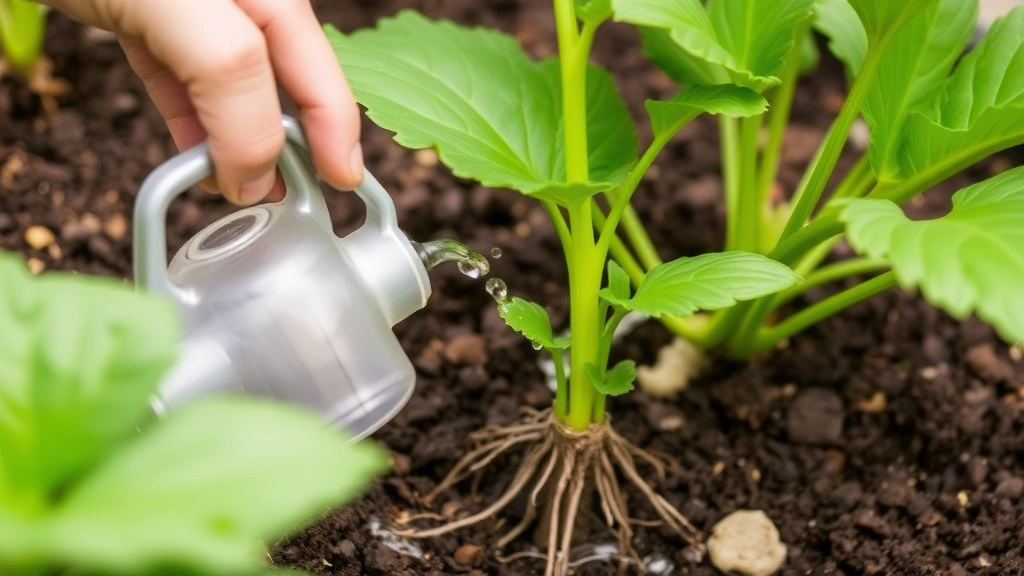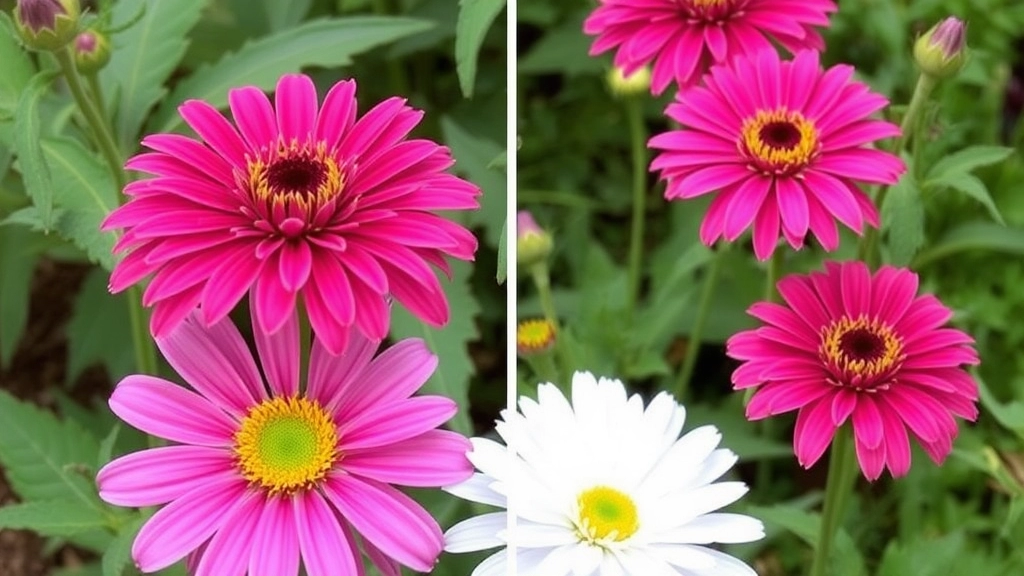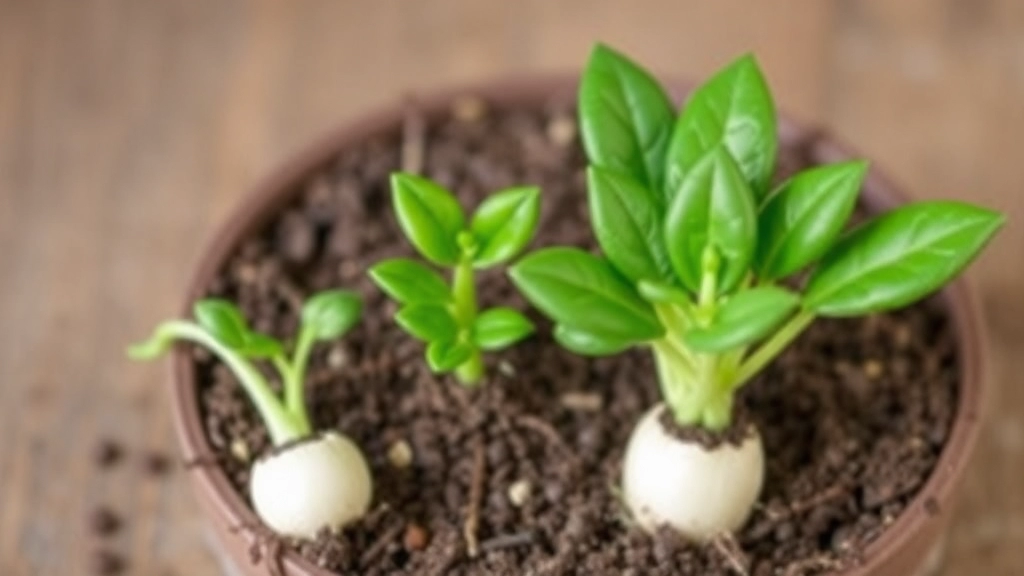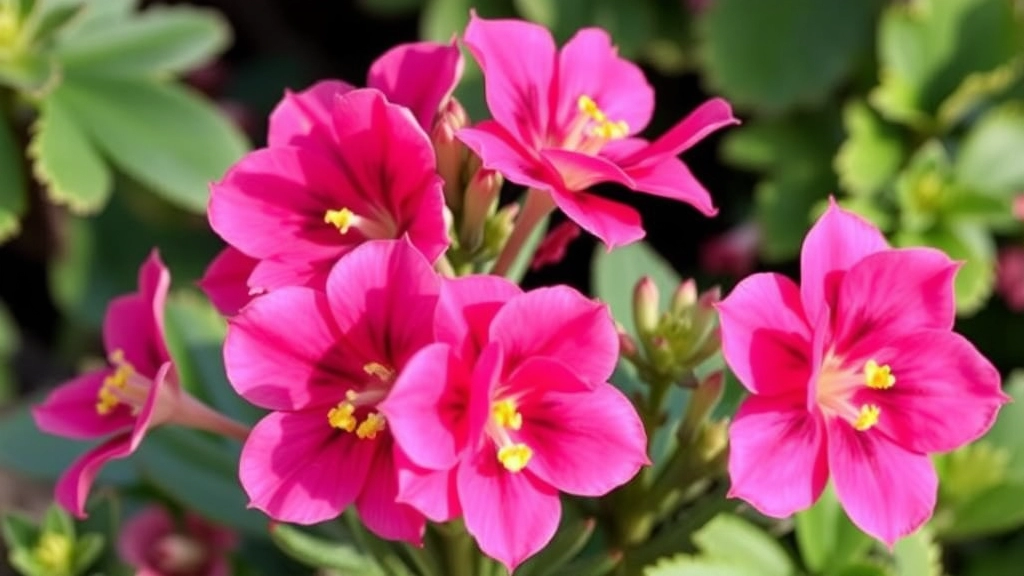Kalanchoe Flaming Katy Care
Lighting
When it comes to Kalanchoe Flaming Katy care, getting the lighting right is crucial. This vibrant plant thrives in bright, indirect sunlight. Place it near a window where it can soak up plenty of light without being scorched by direct rays. If you notice the leaves starting to stretch or lose their colour, it might be a sign they need more light.
Watering
Watering your Flaming Katy correctly can make all the difference. Overwatering is a common mistake that leads to root rot. Let the soil dry out between waterings, and ensure the pot has good drainage. During the growing season, a thorough watering once every two weeks should suffice. Adjust this routine in winter when the plant’s water needs decrease.
Ideal Light and Location for Flaming Katy
Are you struggling to get your Flaming Katy to thrive? One of the most crucial factors for its success is the right light and location.
Understanding Light Requirements
Flaming Katy, or Kalanchoe blossfeldiana, thrives best in bright, indirect sunlight. Here are some key points to consider:
- Direct Sunlight: While it can handle a few hours of direct sun, prolonged exposure can scorch its leaves.
- Indirect Light: A south or west-facing window is ideal. This allows your plant to soak up bright light without the risk of burning.
- Artificial Light: If natural light is limited, consider using grow lights. These can effectively supplement your plant’s light needs.
Choosing the Right Location
The location of your Flaming Katy can significantly impact its growth. Here’s what to keep in mind:
- Temperature: Keep your plant in a warm spot, ideally between 20-25°C (68-77°F). Avoid cold drafts and sudden temperature changes.
- Humidity: Flaming Katy prefers low humidity. A dry environment is perfect, making it suitable for most indoor settings.
- Avoiding Overcrowding: Ensure your plant has enough space to breathe. Crowding can lead to poor air circulation and increase the risk of diseases.
For more detailed care tips, check out our Flaming Katy Kalanchoe care guide. If you’re interested in exploring other Kalanchoe varieties, our guide to top fuzzy Kalanchoe types is a great resource.
Proper Watering Techniques to Prevent Root Rot

Have you ever worried about overwatering your Flaming Katy? It’s a common concern, and for good reason! Root rot can sneak up on even the most seasoned plant parents.
To keep your Flaming Katy thriving, let’s dive into some straightforward watering techniques that will help you dodge that pesky root rot.
Key Watering Tips:
- Check the Soil: Always stick your finger into the soil about an inch deep. If it feels dry, it’s time to water. If it’s still moist, hold off for a bit.
- Watering Method: When you do water, give it a good soak! Pour water until it drains out of the bottom of the pot. This ensures the roots get a nice drink without sitting in water.
- Frequency: Depending on your environment, you might need to water every 1-2 weeks. In winter, cut back on watering since the plant is resting.
- Drainage Matters: Make sure your pot has drainage holes. This is crucial! If water can’t escape, you’re asking for trouble.
- Use the Right Water: Tap water is usually fine, but if it’s heavily chlorinated, let it sit out for 24 hours before using it. This allows the chlorine to dissipate.
- Signs of Trouble: Keep an eye out for yellowing leaves or a mushy stem. These are red flags that your Flaming Katy might be waterlogged.
When it comes to nurturing your Flaming Katy, the right soil can make all the difference. Many plant enthusiasts often wonder: what type of soil is best for optimal growth?
### Choosing the Right Soil Mix
Flaming Katy, also known as Kalanchoe blossfeldiana, thrives in well-draining soil. Here’s what you should consider:
– **Cactus or Succulent Mix**: These pre-made mixes are designed to provide excellent drainage while retaining some moisture.
– **DIY Mix**: If you prefer to create your own, combine:
– 2 parts potting soil
– 1 part perlite or coarse sand
– 1 part peat moss or coconut coir
This blend ensures that your plant has access to nutrients without the risk of waterlogging.
### pH Levels
Flaming Katy prefers a slightly acidic to neutral pH, ideally between 6.0 and 7.0. You can test your soil’s pH with a simple kit from your local garden centre.
### Drainage is Key
Good drainage is crucial. Here are some tips to ensure your Flaming Katy’s roots stay healthy:
– **Use Pots with Drainage Holes**: Always choose pots that allow excess water to escape.
– **Add a Layer of Gravel**: Placing a layer of gravel at the bottom of your pot can enhance drainage further.
– **Avoid Heavy Soils**: Steer clear of heavy, clay-based soils that retain too much moisture.
### Nutrient Considerations
While Flaming Katy isn’t particularly demanding, a little extra care can go a long way:
– **Fertiliser**: Use a balanced, water-soluble fertiliser during the growing season, diluted to half strength.
– **Frequency**: Fertilising once a month is usually sufficient.
For more detailed care tips, check out our [ultimate guide to caring for Kalanchoe Flaming Katy](https://planthq.org/ultimate-guide-to-caring-for-kalanchoe-flaming-katy/). Additionally, if you are interested in the health benefits of Kalanchoe plants, our article on the [medicinal properties and health benefits of Kalanchoe](https://planthq.org/kalanchoe-medicinal-properties-health-benefits-uses/) might be of interest.
Encouraging Blooming and Deadheading Tips for Flaming Katy

If you’ve been nurturing your Flaming Katy and are eager to see those vibrant blooms, you’re not alone. Many plant enthusiasts share the same desire for a flourishing display.
Understanding Blooming Conditions
To encourage blooming in your Flaming Katy, consider the following:
- Light Exposure: Ensure your plant receives bright, indirect sunlight. Too much direct sunlight can scorch the leaves, while too little can hinder blooming.
- Temperature: Maintain a warm environment. Flaming Katy thrives in temperatures between 18°C to 24°C.
- Fertilization: Use a balanced, water-soluble fertiliser every few weeks during the growing season. This provides essential nutrients that promote blooming.
The Importance of Deadheading
Deadheading, or removing spent flowers, is crucial for encouraging more blooms. Here’s how to do it effectively:
- Timing: Deadhead as soon as the flowers begin to wilt. This helps redirect the plant’s energy towards producing new blooms.
- Technique: Use clean, sharp scissors or pruning shears to snip off the flower stem just above the nearest leaf node. This prevents potential disease and encourages healthy growth.
- Frequency: Regularly check your plant and deadhead as needed to maintain a tidy appearance and promote continuous blooming.
A Personal Touch
I remember the first time I deadheaded my Flaming Katy. I was hesitant, fearing I might harm the plant. But once I saw the new blooms emerge, I realised how vital this simple task was for its health.
Managing Pests and Common Diseases
As we delve deeper into caring for your Flaming Katy, it’s crucial to address the potential pests and diseases that can hinder its vibrant growth.
Common Pests
Flaming Katy, or Kalanchoe blossfeldiana, is generally resilient, but it can attract a few unwelcome guests:
- Mealybugs: These pests appear as white, cottony masses on leaves and stems. They can sap the plant’s energy, leading to wilting.
- Aphids: Small, green insects that cluster on new growth. They can distort leaves and reduce blooming.
- Spider Mites: Tiny and often invisible, they create fine webbing and cause leaf discoloration.
Signs of Infestation
Recognising the signs early can save your plant:
- Yellowing leaves
- Wilting despite adequate watering
- Sticky residue on leaves (honeydew from aphids)
Treatment Options
When it comes to managing these pests, consider the following methods:
- Manual Removal: For minor infestations, wipe leaves with a damp cloth or use a soft brush.
- Insecticidal Soap: A gentle yet effective solution for larger infestations. Apply as per the instructions on the product label.
- Neem Oil: This natural pesticide works wonders against a variety of pests. Spray it on affected areas, ensuring coverage.
Common Diseases
In addition to pests, Flaming Katy can be susceptible to diseases, particularly if overwatered:
- Root Rot: Caused by overly wet conditions, leading to mushy roots.
- Powdery Mildew: A white fungal growth on leaves, often due to high humidity.
Prevention Tips
To keep your Flaming Katy healthy and thriving:
- Ensure Good Drainage: Use pots with drainage holes and a suitable soil mix.
- Avoid Overwatering: Allow the soil to dry out between waterings.
- Air Circulation: Place your plant in a well-ventilated area to reduce humidity and prevent mildew.
Propagation Methods: Stem Cuttings and Offsets

So, you’ve got a stunning Flaming Katy and you’re wondering how to multiply that beauty, right?
Let’s dive into two simple and effective methods: stem cuttings and offsets.
Stem Cuttings
This is one of the easiest ways to propagate your Flaming Katy. Here’s how to do it:
- Choose a Healthy Stem: Look for a stem that’s firm and free from any pests or diseases.
- Cut it Right: Use clean, sharp scissors to snip off a 4-6 inch section of the stem.
- Let it Callous: Place the cutting in a dry spot for a few hours, allowing the cut end to callous over. This helps prevent rot when you plant it.
- Plant it: Stick the cutting into well-draining soil, burying it about an inch deep.
- Water Sparingly: Give it a light watering and keep the soil slightly moist, but not soggy.
Give it a couple of weeks, and you should see new growth!
Offsets
Offsets are little baby plants that grow at the base of your Flaming Katy. They’re super easy to separate and replant. Here’s what to do:
- Identify Offsets: Look for small rosettes that are attached to the main plant.
- Gently Remove: Carefully pull the offset away from the parent plant, making sure to get some roots if possible.
- Replant: Place the offset in its own pot with the same well-draining soil.
- Water Lightly: Just like with stem cuttings, keep the soil slightly moist.
Offsets are a great way to expand your collection without much fuss!
As we’ve explored the essentials of maintaining your Flaming Katy, it’s crucial to also consider how pruning and repotting can enhance its longevity. Many plant enthusiasts often worry about how to keep their plants thriving over time.
### Pruning Your Flaming Katy
Pruning is not just about aesthetics; it’s vital for the health of your Flaming Katy. Regular pruning encourages bushier growth and more blooms. Here are some straightforward tips:
– **When to Prune:** Early spring is the best time to prune, just before the growing season kicks in.
– **Tools Required:** Use clean, sharp scissors or pruning shears to avoid damaging the plant.
– **How to Prune:**
– Remove any dead or yellowing leaves.
– Trim back leggy growth to encourage a fuller shape.
– Aim to cut just above a leaf node to promote new growth.
### Repotting for Healthier Growth
Repotting is essential for preventing root-bound conditions and ensuring your Flaming Katy has ample space to grow. Here’s how to do it effectively:
– **When to Repot:** Generally, repot every 1-2 years or when the plant outgrows its pot.
– **Choosing the Right Pot:** Select a pot that is 1-2 inches larger in diameter than the current one. Ensure it has good drainage holes.
– **Soil Considerations:** Use a well-draining soil mix, ideally a cactus or succulent blend, to prevent root rot.
– **Steps to Repot:**
– Gently remove the plant from its current pot.
– Loosen any tightly bound roots.
– Place it in the new pot and fill with fresh soil, ensuring the root ball is level with the top of the pot.
For more detailed guidance on caring for your Flaming Katy, you can refer to this [complete guide for vibrant blooms](https://planthq.org/florist-kalanchoe-plant-care-complete-guide-for-vibrant-blooms/). Additionally, if you are facing issues with flowering, check out the [top reasons and fixes](https://planthq.org/why-is-my-kalanchoe-not-flowering-top-reasons-and-fixes/) to ensure your plant thrives.
FAQs on Kalanchoe Flaming Katy Care
What are the proper watering techniques for Flaming Katy?
Proper watering techniques are essential to prevent root rot in Flaming Katy. Always check the soil moisture by sticking your finger about an inch deep into the soil. Water thoroughly when the soil is dry, ensuring the pot has drainage holes to let excess water escape. Adjust your watering frequency based on the environment, typically every 1-2 weeks, and reduce watering during winter.
How can I encourage my Flaming Katy to bloom?
To encourage blooming, ensure your Flaming Katy receives bright, indirect sunlight and is kept in a warm environment (18°C to 24°C). Use a balanced, water-soluble fertiliser every few weeks during the growing season to provide essential nutrients.
Why is deadheading important for Flaming Katy, and how do I do it?
Deadheading, or removing spent flowers, is crucial for encouraging more blooms and maintaining the plant’s appearance. Use clean, sharp scissors to snip off the flower stem just above the nearest leaf node as soon as the flowers begin to wilt. Regularly check and deadhead your plant to promote continuous blooming.
How can I propagate Flaming Katy using stem cuttings?
To propagate Flaming Katy using stem cuttings, choose a healthy stem and cut a 4-6 inch section. Allow the cut end to callous over for a few hours before planting it in well-draining soil. Water sparingly and keep the soil slightly moist. New growth should appear in a couple of weeks.
What are offsets, and how do I use them to propagate Flaming Katy?
Offsets are small rosettes that grow at the base of your Flaming Katy. To propagate using offsets, gently remove them from the parent plant, ensuring to get some roots if possible. Replant the offset in its own pot with well-draining soil and water lightly to keep the soil slightly moist.
What signs indicate that my Flaming Katy might be overwatered?
Signs of overwatering include yellowing leaves and a mushy stem. These symptoms indicate that the plant may be waterlogged and at risk of root rot. Adjust your watering habits accordingly to prevent further damage.
What type of water should I use for my Flaming Katy?
Tap water is usually fine for Flaming Katy, but if it is heavily chlorinated, let it sit out for 24 hours before using it. This allows the chlorine to dissipate, making the water safer for your plant.
References
-
Gardening Know How: Flaming Katy Watering Guide
-
The Spruce: How to Grow Flaming Katy Indoors
-
House Plants Expert: Flaming Katy Care
